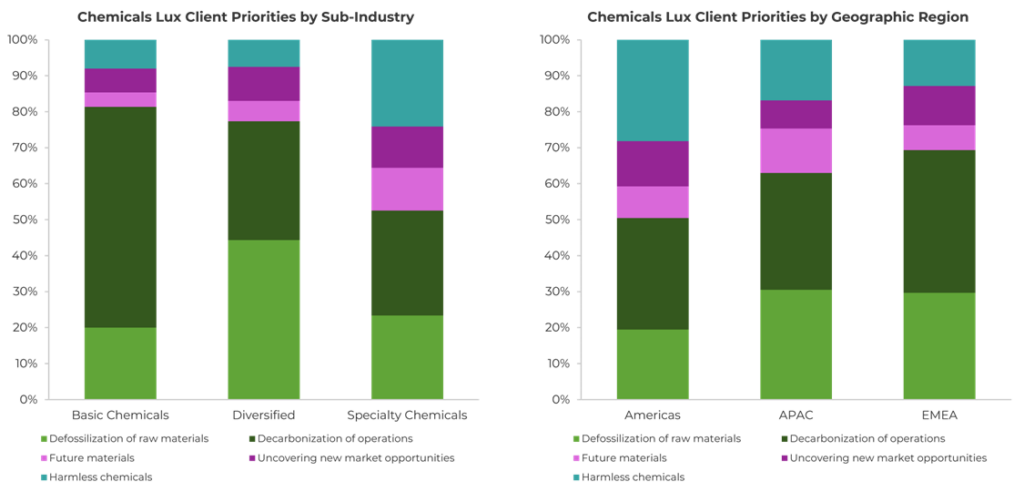The chemicals industry is undergoing a significant transformation driven by global megatrends, market disruptions, and technology advances that bring both challenges and opportunities for growth. Recent geopolitical tensions have led to high energy prices and disrupted raw materials supplies, exposing supply chain vulnerabilities, all of which have had immediate financial impacts across the sector. These impacts, in addition to increasing regulatory pressures and evolving consumer sentiments, are compelling companies to reassess their operations and product offerings to mitigate future risks. Moreover, the markets served by the chemicals industry are rapidly evolving, offering a unique opportunity for companies to support their customers’ own transformations. But what does this mean for the future of the chemicals industry? What focus areas are chemicals innovation leaders prioritizing to strengthen their organizations’ resilience and capitalize on shifting market dynamics?
To answer these questions, Lux took a two-pronged approach, first leveraging natural language processing to synthesize distinct topics and themes from 80 annual reports of the world’s largest chemicals companies as well as Lux’s own proprietary, anonymized, and aggregated data from innovation leaders representing 302 corporations across the globe. Next, Lux interviewed over 30 innovation executives to extract top-level interpretations of the themes and leverage their industry expertise to vet the findings and ensure they align with organizational business needs and strategic priorities. The analysis surfaced five key priorities defining the next era of chemicals innovation: Defossilization of Raw Materials, Decarbonization of Operations, Future Materials, Uncovering New Market Opportunities, and Harmless Chemicals.

Of the companies analyzed, 93% identified decarbonization of operations as a critical innovation initiative, while 77% are focused on finding alternative carbon sources for their raw materials supplies, and 74% are focused on developing products or processes that involve less harmful and “safer” chemistries. These numbers suggest that the industry is largely operating from a position of risk avoidance — companies are looking to get ahead of future carbon taxes, build supply chain resilience, and get ahead of policies such as restrictions and bans on materials of concern. Of the remaining priorities, 53% and 40% of the companies analyzed identified uncovering new market opportunities and future materials as being key focus areas, respectively. Many companies are looking to return to the basics: process and product excellence to drive business growth and market expansion, but the latter is more critical for companies with differentiated product offerings.

Going a step further, Lux analyzed the five priorities across (1) subindustry (i.e., basic, diversified, and specialty chemicals) and (2) geographic region (i.e., Americas, APAC, and EMEA). Some key findings include:
- Defossilization of Raw Materials and Decarbonization of Operations are central focuses across all subindustries. However, Defossilization of Raw Materials is prioritized less in the Americas as there is less pressure to move away from virgin fossil-based inputs and diversify.
- Harmless Chemicals, Future Materials, and Uncovering New Market Opportunities are most prominent among specialty chemicals companies, which are often closer to end-users and must be agile in responding to consumer preferences and concerns, novel materials innovation, and evolving market needs.
- With Future Materials being a fundamental part of the industry’s R&D DNA, APAC shows slightly more emphasis, particularly in Japan and South Korea, where companies have positioned themselves as global leaders in chemicals and materials sciences innovation.
Curious to learn more about our findings? Reach out to discuss our e-book, “The Next Era of Chemicals Innovation.” We can dive deeper into the key questions innovation leaders are asking today and the emerging technologies shaping the industry. Additionally, we offer guidance on preparing for the uncertain road ahead, including strategies for building a strong technology and product portfolio, identifying innovation gaps through benchmarking, and improving visibility into consumer insights. Reach out to start the conversation.

